Home » Products » Coating Inspection » Pinhole / Porosity Detection » Sponge / Pinhole Testers » Elcometer 270 Pinhole Detectors
Elcometer 270 Pinhole Detectors

Product Description
The Elcometer 270 Range utilises the ‘wet sponge’ method of holiday detection and has been designed to set a new standard for wet sponge detectors namely, a quality low voltage detector with similar accessories to a high voltage spark tester. Used by consultants on the Jahre Viking, one of the largest ships in the world at 648 tons. 30 000 sq metres were tested and the batteries lasted 140 hrs. The 270 was superior to other instruments tested.
Features of the Elcometer 270 Pinhole Detector
• Automatic sensitivity calibration and voltage checks
• Low battery indicator
• Visual and audible alarms
• Integral and separate wand functionality
• A wide range of fully interchangeable wand accessories
• Three model variants – single, dual or triple voltages
• Easy release snag proof cables
• Large standard sponge
• An inspection kit for all your requirements is available (see image with the unit included)
The Elcometer 270 Pinhole Detector can be used in accordance with:
• AS 3894.2
• ASTM D 5162-A
• ASTM G6
• ASTM G62-A
• BS 7793-2
• ISO 8289-A
• ISO 14654
• JIS K 6766
• NACE RP 0188*
• NACE SP 0188
• NACE TM0384
* Standards not in bold have been superseded but are still recognised in some industries
Specifications
Elcometer 270 Pinhole Detectors – Specifications
| Model | Elcometer 270/3 Pinhole Detector | Elcometer 270/4 Pinhole Detector | Certificate |
| Part Number | D270—-3 | D270—-4 | |
| Part Number with Certificate | D270—-3C | D270—-4C | ● |
| Voltage | 9V and 90V | 9V, 67.5V and 90V | |
| Maximum Measurement Range | 500µm | 500µm | |
Sensitivity
|
9V: 90kΩ ±5% | 9V: 90kΩ ±5% | |
| 90V: 400kΩ ±5% | 67.5V: 125kΩ ±5% | ||
| 90V: 400kΩ ±5% | |||
Battery Life (continuous use) |
9V: up to 200 hours | 9V: up to 200 hours | |
| 90V: up to 80 hours | 67.5V: up to 100 hours | ||
| 90V: up to 80 hours | |||
| Battery Type | 3 x AA (LR1600) 1.5V alkaline (NiMH rechargeable batteries can also be used, battery life will be reduced by up to 75%) | ||
| Accuracy of Setting | ±5% | ||
Dimensions
|
Without Wand: 210 x 42 x 37mm | ||
| Standard Wand: 175mm long (including sponge) | |||
| Flat Sponge: 175mm long (including sponge) | |||
| Weight | 610g including wand, cable and batteries | ||
- Calibration Certificate supplied as standard
Packing List
- Pinhole Detector
- Standard wand and flat sponge
- 4m return lead with crocodile clip
- 3 x LR1600 (AA) batteries
- Operating instructions
Data Sheet
Standards
Elcometer 270 Pinhole Detectors – Standards
The Elcometer 270 Pinhole Detector can be used in accordance with:
• AS 3894.2
• ASTM D 5162-A
• ASTM G6
• ASTM G62-A
• BS 7793-2
• ISO 8289-A
• ISO 14654
• JIS K 6766
• NACE RP 0188*
• NACE SP 0188
• NACE TM0384
* Standards not in bold have been superseded but are still recognised in some industries
Accessories
Elcometer 270 Pinhole Detectors – Accessories
| Part Number | Description | |
| Standard Wand | ||
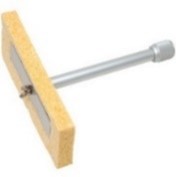 |
T27016867 | Standard Wand A universal flat sponge to suit almost all applications |
| T27018050 | Spare flat sponge set pack of 3 sponges 150 x 60 x 25mm | |
| Telescopic wand adaptor with Belt clip | ||
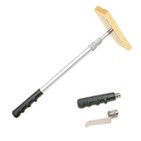 |
T27016998 | Telescopic wand adaptor with belt clip extends to 1m for floors or high areas |
| T27016999 | Separate wand adaptor with belt clip converts the gauge into a separate pinhole detector | |
| Roller Sponge Wand | ||
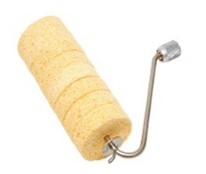 |
T27016960 | Roller sponge wand for large flat surface inspection |
| T27018051 | Spare roller sponge | |
| Extension piece | ||
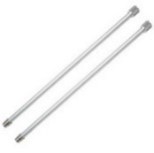 |
T27016965 | Extension piece 420mm extensions to expand operators reach. Additional extension pieces can be connected to each other |
| Return Cable | ||
 |
T99916954 | Return cable 4m supplied as standard complete with crocodile clip and connection plug. |
| T99916996 | Return cable 10m supplied on a drum complete with clip and connection plug. | |
| Wetting Agent | ||
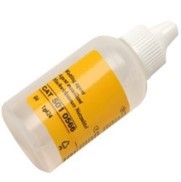 |
T27018024 | Wetting agent 50ml bottle helps aid the fast detection of pinholes. Just add to the water used to dampen the sponge. |
Instruction Manual
Elcometer 270 Pinhole Detectors – Instruction Manual
Elcometer 270 Pinhole Detectors – Instruction Manual
Video
Elcometer 270 Pinhole Detectors – Video
Corrosion is caused by a steel substrate and oxygen, while contaminants such as water can accelerate the process.
The coating is there to protect the steel from oxygen and contaminants. A flaw in the coating can leave the substrate poorly protected, or in some cases completely exposed.
These flaws are referred to as Holidays, Discontinuities, or Pinholes within the coatings industry; and are often very small or invisible to the naked eye – which is where flaw detectors come in.
Contents
0:31 – What causes corrosion?
0:50 – Types of coating flaws
2:26 – Low Voltage Pinhole or Wet Sponge Technique
3:38 – High Voltage or Holiday Detection Method
5:03 – Continuous DC and Pulsed DC
7:14 – UV Pinhole Technique
There are, essentially, three flaw detection methods…
1. The Low Voltage Pinhole, or Wet Sponge Technique such as the Elcometer 270, is for testing insulating coatings less than 500μm (20mils) thick on conductive substrates, and is ideal for powder coatings and other applications where you do not wish to damage the coating.
The wet sponge method for detecting pinholes – which is a little bit of a misnomer, as the sponge should be damp, and not wet – also works through capillary action.
When you pass a damp sponge steadily over the coated surface, the water is drawn through the holes by capillary action, and when it touches the bare substrate it completes a low voltage circuit, as the test unit is grounded to an uncoated section of the substrate being examined.
When the circuit is complete, the unit alarms, letting you know where you have a pinhole.
2. The High Voltage or Holiday Detection method is where a high voltage current is applied to a probe, which is passed over the coated surface.
The voltage should be high enough so that in areas
where the coating is electrically weaker due to a flaw, there is sufficient voltage to break down the gap between the probe and the substrate.
When this break down occurs, the current flows through the substrate, and back into the unit via a grounding cable, setting off an alarm to signal a flaw has been detected.
This allows you to detect flaws that don’t go all the way down to the substrate, as well as voids within the coating.
The high voltage method comes in 2 versions – Continuous DC and Pulsed DC.
Continuous DC is where the current to the probe is constant, and is used to test insulation coatings on conductive substrates up to 7.5mm (300mils) thick.
Elcometer has the Elcometer 266, where the power supply is generated within the handle, and connected back to the instrument via a low voltage cable.
Pulsed DC, on the other hand, is where the energy is contained in very short pulses, with each pulse having more energy than an equivalent Continuous DC instrument.
The break in energy stops the probe from building up a charge on the surface, allowing you to safely test for flaws on damp, dirty, or slightly conductive coatings.
Using state of the art electronics, the Elcometer 280 Pulsed DC Holiday Detector can test coatings up to 25mm (1”).
3. The UV Pinhole technique – such as the Elcometer 260, which makes use of a fluorescent coating, which is applied to the surface as a base coat. Once the second coat is applied, any pinholes fluoresce when you shine a UV light on them, revealing their location.
Each test method is explored in much more detail in the Elcometer Pinhole and High Voltage Detector series. Visit http://www.elcometer.com/en/videos to find out more.

